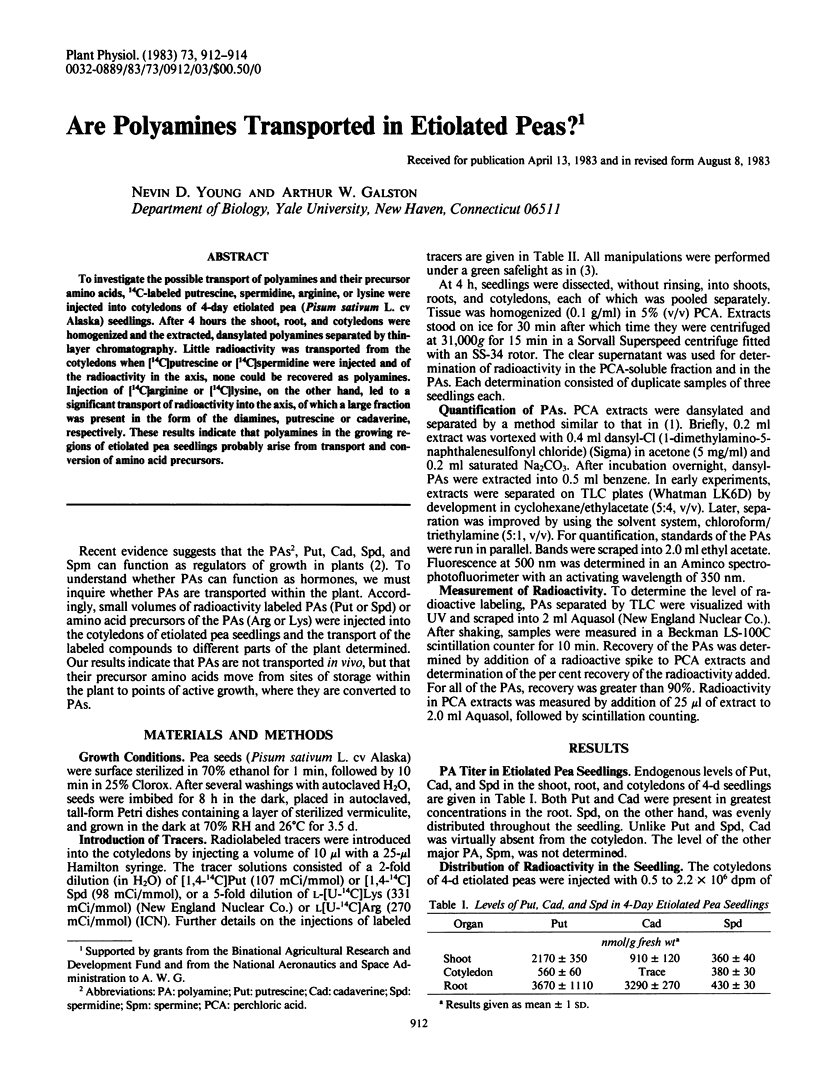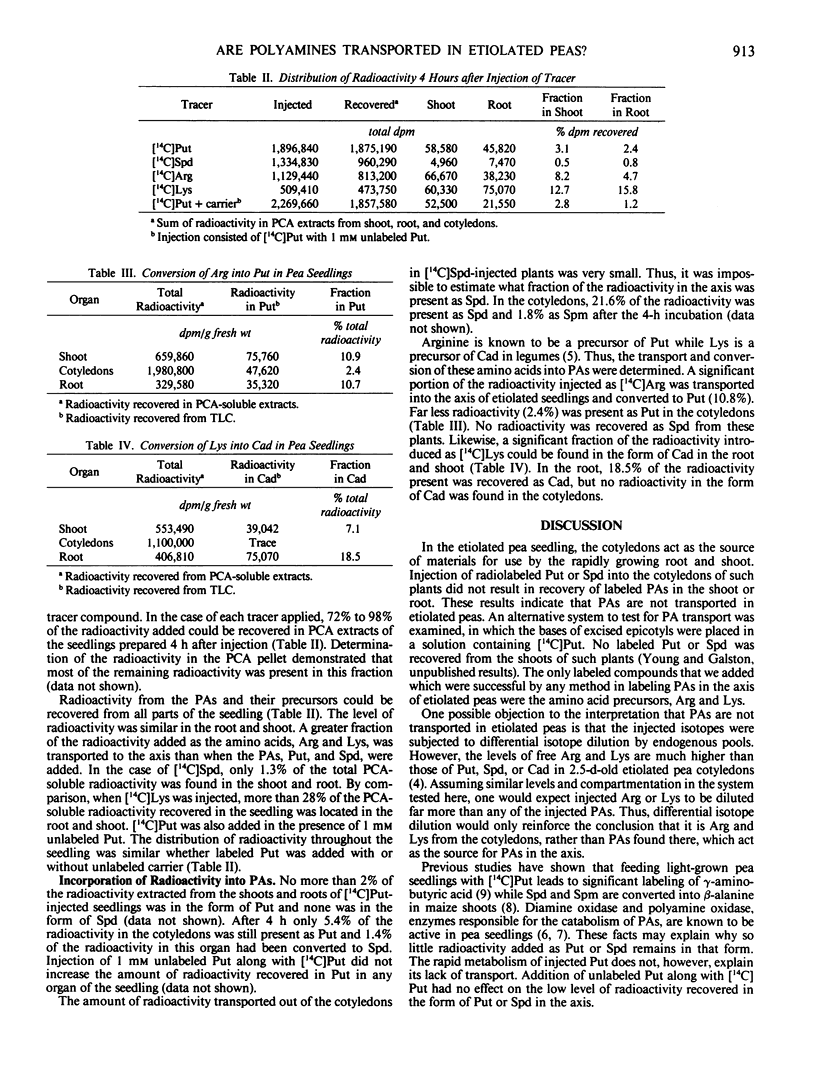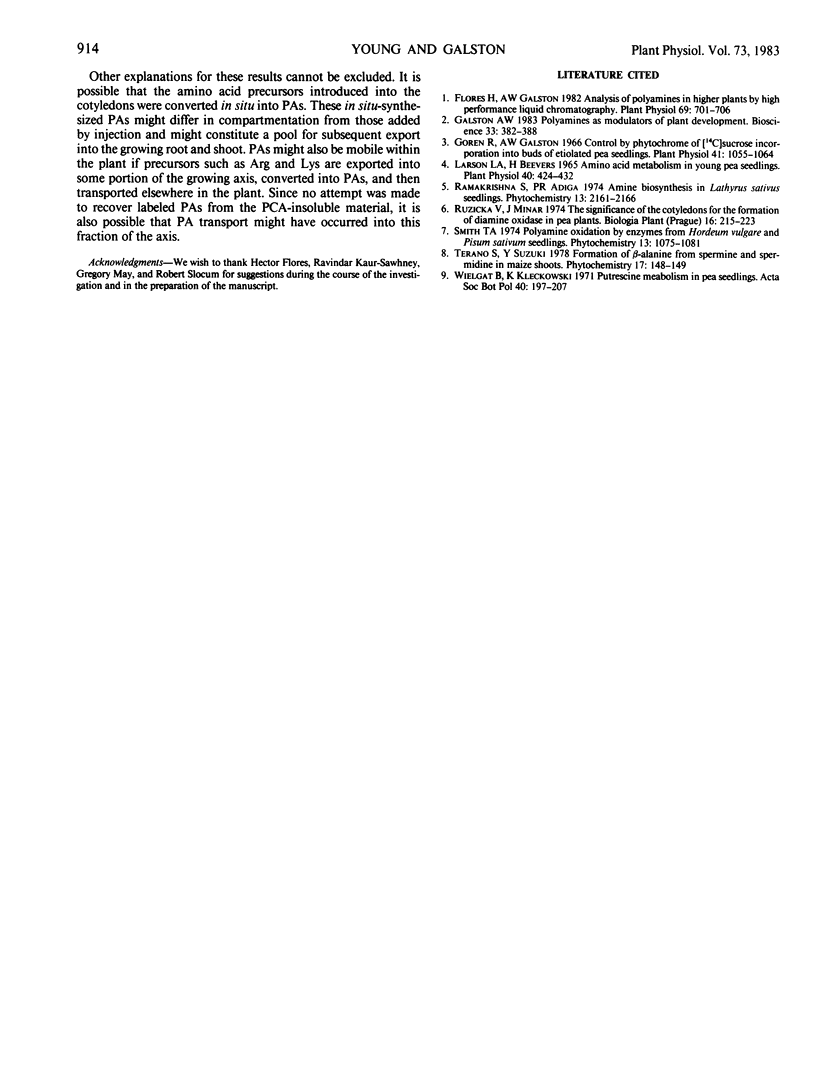Abstract
To investigate the possible transport of polyamines and their precursor amino acids, 14C-labeled putrescine, spermidine, arginine, or lysine were injected into cotyledons of 4-day etiolated pea (Pisum sativum L. cv Alaska) seedlings. After 4 hours the shoot, root, and cotyledons were homogenized and the extracted, dansylated polyamines separated by thin-layer chromatography. Little radioactivity was transported from the cotyledons when [14C]putrescine or [14C]spermidine were injected and of the radioactivity in the axis, none could be recovered as polyamines. Injection of [14C]arginine or [14C]lysine, on the other hand, led to a significant transport of radioactivity into the axis, of which a large fraction was present in the form of the diamines, putrescine or cadaverine, respectively. These results indicate that polyamines in the growing regions of etiolated pea seedlings probably arise from transport and conversion of amino acid precursors.
Full text
PDF


Selected References
These references are in PubMed. This may not be the complete list of references from this article.
- Flores H. E., Galston A. W. Analysis of polyamines in higher plants by high performance liquid chromatography. Plant Physiol. 1982 Mar;69(3):701–706. doi: 10.1104/pp.69.3.701. [DOI] [PMC free article] [PubMed] [Google Scholar]
- Goren R., Galston A. W. Control by phytochrome of C-sucrose incorporation into buds of etiolated pea seedlings. Plant Physiol. 1966 Jun;41(6):1055–1064. doi: 10.1104/pp.41.6.1055. [DOI] [PMC free article] [PubMed] [Google Scholar]
- Larson L. A., Beevers H. Amino Acid Metabolism in Young Pea Seedlings. Plant Physiol. 1965 May;40(3):424–432. doi: 10.1104/pp.40.3.424. [DOI] [PMC free article] [PubMed] [Google Scholar]


